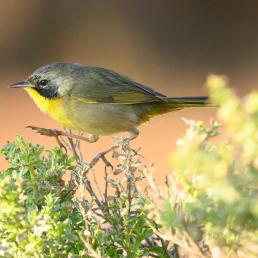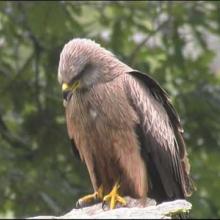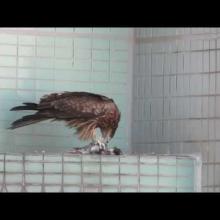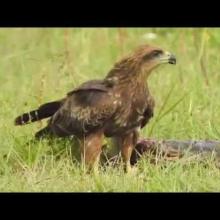

Join BirdNote tomorrow, November 30th!
Illustrator David Sibley and actor H. Jon Benjamin will face off in the bird illustration battle of the century during BirdNote's Year-end Celebration and Auction!
In the savanna country of northern Australia, the vegetation is well adapted to the area’s recurrent fires. As flames sweep across the savanna, Black Kites watch for prey like grasshoppers and lizards that flee the fire. But there’s now evidence that Black Kites may actually create fires by carrying burning twigs in their talons and dropping them on a patch of savanna away from the original wildfire. The kites then pick off the escaping prey. Setting a new area ablaze allows that individual kite to feed in a space where there aren’t so many rival predators.
Today's show brought to you by the Bobolink Foundation.
BirdNote®
Do Black Kites Start Fires?
Written by Bob Sundstrom
This is BirdNote.
[Loud sounds of fire burning, crackling]
The savanna country of northern Australia is one of the most fire-prone natural habitats in the world, and the vegetation is well adapted to the recurrent fires. As a fire sweeps across the savanna, birds of prey such as Black Kites stand or hover near the fire’s margin, awaiting prey like grasshoppers and lizards fleeing the flames. [Black Kite calling, http://macaulaylibrary.org/audio/1520, 0.25-.28]
But there’s now growing evidence that Black Kites aren’t only opportunists. They may actually help create some of these fires by carrying burning twigs in their talons, dropping them on a patch of savanna away from the original wildfire, and picking off the escaping prey.
[Loud sounds of fire burning, crackling]
Setting a new area ablaze allows that individual kite to feed in a space where there aren’t so many rival predators. [Black Kite calling, http://macaulaylibrary.org/audio/1520, 0.25-.28]
During the 2016 fire season in Australia, two scientists collected data to document this phenomenon. Accounts from fire fighters, park rangers, and other stewards of the land echo the knowledge of indigenous people of northern Australia, who have long known about birds propagating fires.
This has led some to speculate that early humans might even have learned how to use fire, based on watching these birds carrying burning embers.
[Black Kite calling, http://macaulaylibrary.org/audio/1520, 0.25-.28]
For BirdNote, I’m Mary McCann.
###
Bird sounds provided by The Macaulay Library of Natural Sounds at the Cornell Lab of Ornithology, Ithaca, New York. 1520 recorded by Peter G. Kaestner.
BirdNote’s theme music was composed and played by Nancy Rumbel and John Kessler.
Producer: John Kessler
Executive Producer: Sallie Bodie
© 2017 Tune In to Nature.org January 2017 / 2019 / 2022 Narrator: Mary McCann
This story was produced with support from the Bobolink Foundation.
ID# BLAK-01-2017-01-25 BLAK-01
http://wildfiretoday.com/2016/02/07/did-humans-learn-how-to-use-fire-as…
https://www.academia.edu/22034053/Ornithogenic_Fire_Raptors_as_Propagators_of_Fire_in_the_Australian_Savanna
http://www.iflscience.com/plants-and-animals/australian-raptors-may-be-…






